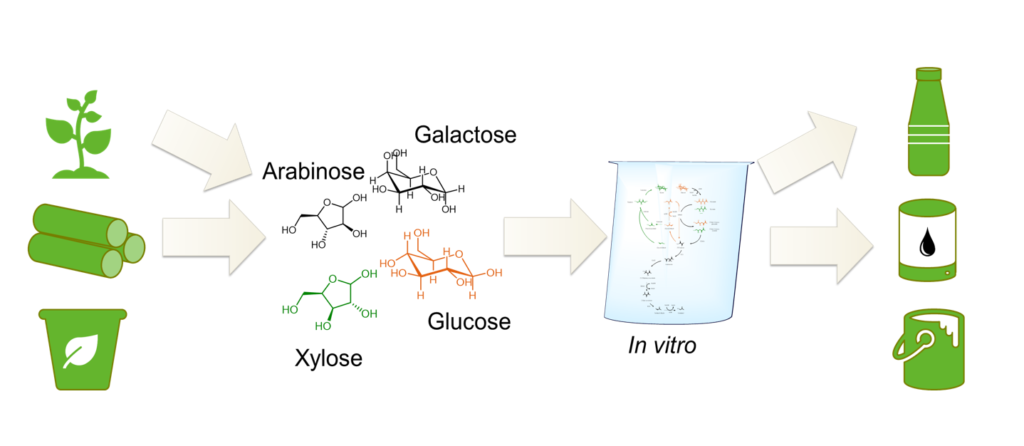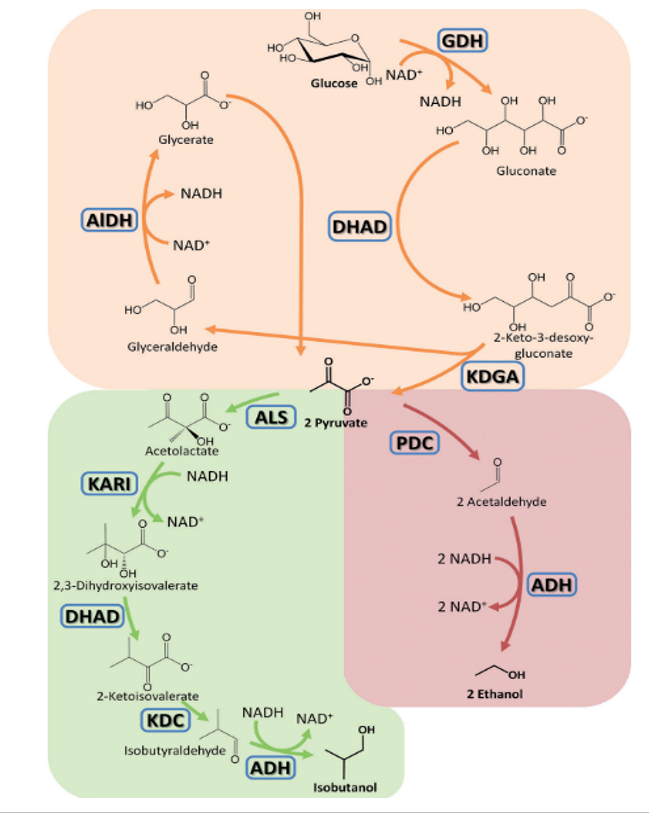Multi-Enzyme Catalysis
Multi-enzyme catalysis means using several enzymes at the same time without having to isolate the resulting intermediates before they are used for the next reaction. This is particularly possible with enzymes, in contrast to chemical catalysts, because they can work effectively under similar conditions or can be modified to be compatible with each other. Our goal is to use multi-enzyme catalysis to produce platform and fine chemicals from sugars or other molecules that can be obtained from renewable resources.

Figure 1: Utilisation of renewable raw materials through the use of enzyme cascades.
For the development and optimisation of multi-enzyme catalysis, we are investigating
- The intrinsic properties of the enzymes involved (activity, specificity, stability) and optimise them if necessary (see enzyme engineering).
- Analytical methods such as HPLC, GC, MS, NMR or enzymatic assays, for the detection and quantification of the intermediates, products and, if necessary, by-products, in order to understand the interplay of the enzymes in multi-enzyme catalysis and to identify their weaknesses and strengths.
- Mathematical models (in cooperation) to make predictions about bottlenecks and optimal conditions for multi-enzyme catalysis according to the research question.
Various multi-enzyme cascades have already been established at the Chair and are being continuously developed:

Figure 2: Enzyme cascades from glucose via pyruvate to isobutanol or ethanol.
In an artificial enzyme cascade developed by us, pyruvate is produced from glucose with four enzymes and the classical glycolysis, which requires 10 enzymes for this, is greatly shortened and simplified. Pyruvate, in turn, can be produced as a starting molecule for a number of interesting products, each with its own cascades (amino acid, isobutanol, etc.).
Other starting molecules for our multi-enzyme catalyses are xylose, which can be obtained from hemicellulose, or glycerol.
In the context of multi-enzyme catalysis, we also deal with the coupling of enzymatic with chemical or eletrochemical reactions, the design of new more stable or cheaper cofactors and, necessarily, enzyme engineering.
